A first-time author takes you through boot camp and beyond, and a noted journalist explores the foibles of funding and fighting in Afghanistan while trying to deal with Pakistan. Others pieces of new military nonfiction illustrate the power of social media, from your smartphone to Russia.
Check out our spring reviews below, in order of reading value and satisfaction. Prices are provided by the publishers; you may find better deals online or in your local bookstore.
Click here for our spring military fiction reviews.
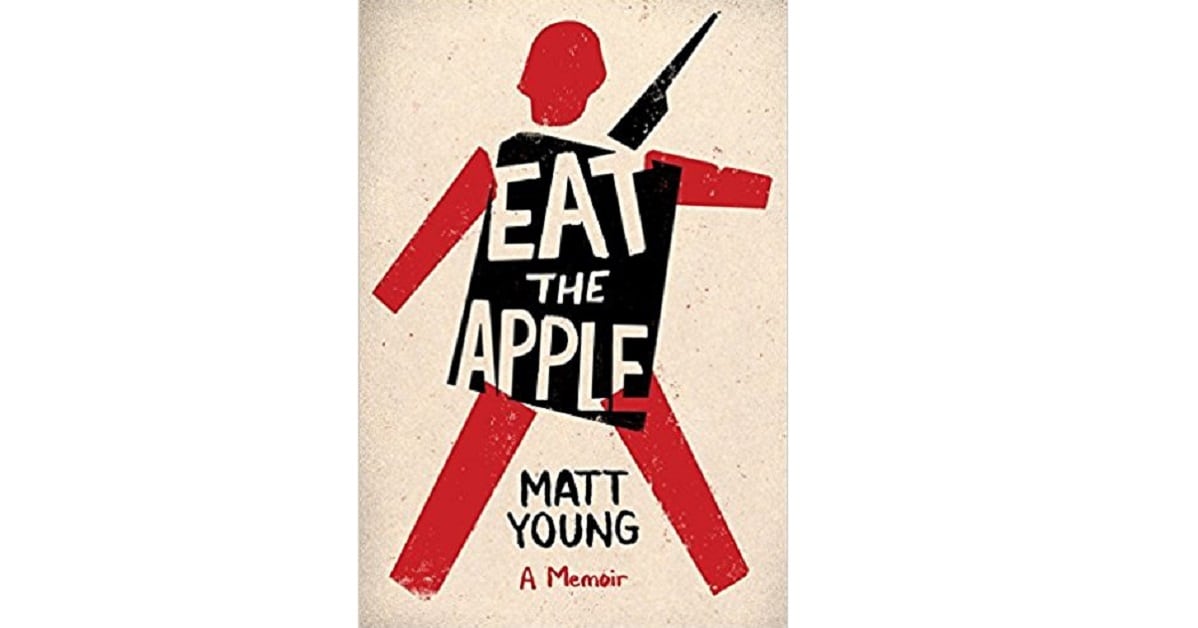
Eat the Apple: A Memoir by Matt Young, Bloomsbury, 251 pages, $26.
This Recruit and You and I and We, in alternating voices, go from Marine boot camp to war and back, from 18-year-old boy to Young man.
Sound familiar? Maybe, but this is not your standard point-and-shoot remembrance. This is a fresh, imaginative reflection full of revelations about becoming a fighter and bemoaning being one.
“We become grunts … meat for the grinder,” says the veteran of three Iraq deployments (one voluntary). “We want to pay for what we think might be the sins accrued in our hard lives by the time we are 19 through violent death and become tragic heroes that instructors tell stories about in hushed tones.”
The tone is darkly comedic and in short chapters that include diagrams (definitely not PowerPoint), lists, scripts and even multiple choice. “Choice is an illusion” in training that creates a “person-thing” whose “foremost prerequisite to existence is that we lose not only our own humanity but remove that of our enemy as well.”
Young learns that “an improperly looped belt shows a lack of attention to detail, which will result in this person causing the deaths of Marines in combat.” If he repeats a task “it will become automatic, ingrained in the muscle forever.” And there are contradictions.
“We are told the Marines don’t see race,” that “we are green,” yet “in the fleet we call one another wetback and honky and twinkie and spade and fence jumper and porch monkey and cracker and gook and round eye.”
As brothers, Marines huddle together against winter winds, and “it’s not gay if it’s for body heat.” We “throw around faggot and queer and poke fun at the effeminate because we’ve learned to fear those intimate feelings, those intense moments of love that well inside us.”
RELATED
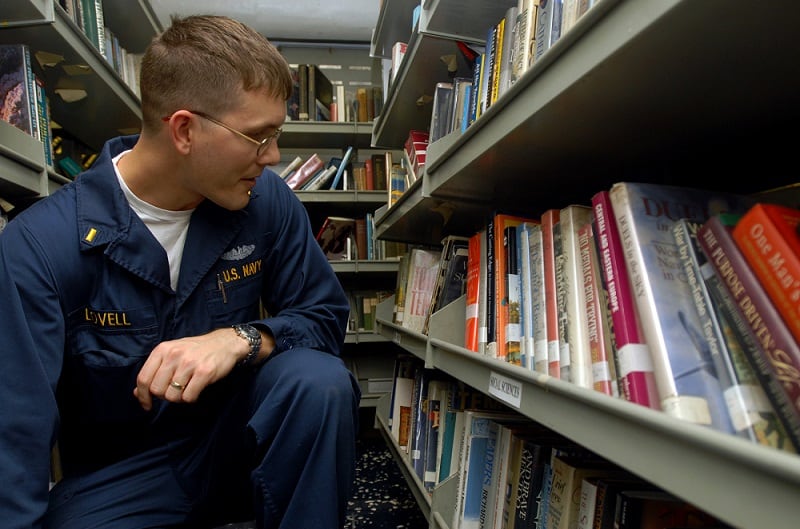
This disruptive candidate for a commandant’s reading list spares no one, including the first-time author, whose military life is full of sweat and sweating. Alcohol and drinking. Masturbation and jerking off. Self-contempt and contempt for others. Brotherhood and estrangement — and their companions, guilt and indifference.
Those truths have residual consequences. Wherever a bullet goes “its true path of trajectory will pass directly into us, where it will ricochet off our bones and rip through our insides and smash into our consciousness … shredding for years.” The years make Marines for life — who opt, as the phrase goes, to eat the fruit and [expletive deleted] the Corps.
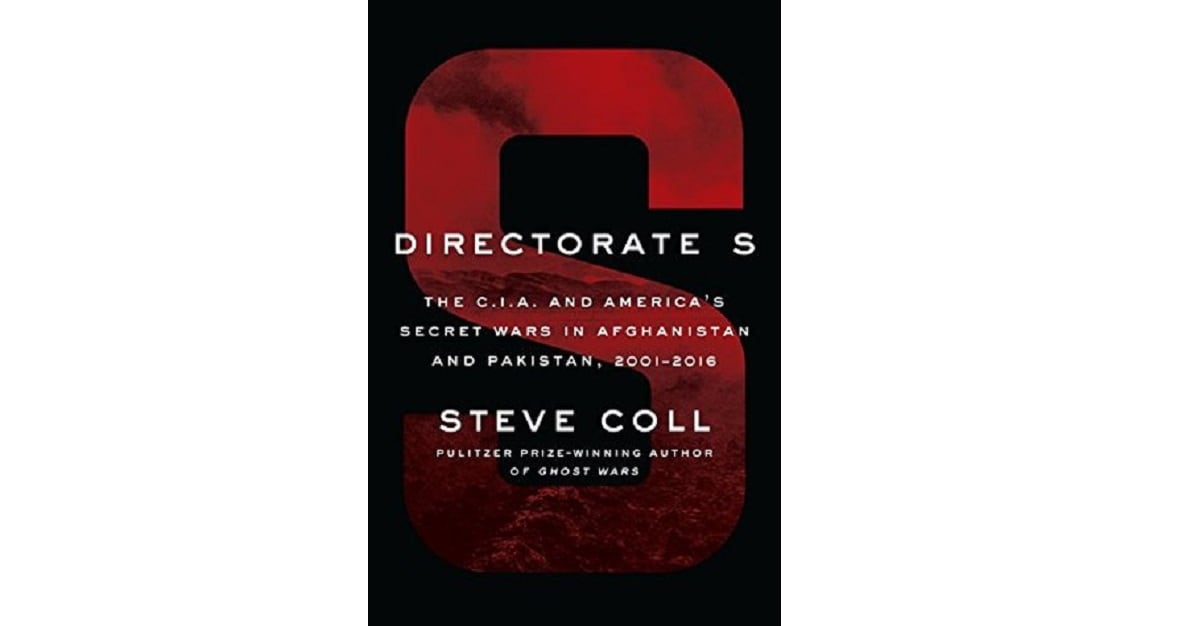
Directorate S: The CIA and America’s Secret Wars in Afghanistan and Pakistan by Steve Coll, Penguin, 784 pages, $35.
The author of “Ghost Wars,” the 2005 Pulitzer winner about the CIA and Pakistan’s version of the agency, Inter-Services Intelligence, returns with a follow-up that he says “can easily be read independently.”
He’s right. Despite a forgettable title, the story sticks with you — a journalistically rewarding account that is dense but worth devouring.
He documents the mistakes — or, to be diplomatic, the miscommunications — between the CIA, the FBI, the Pentagon and the White House during the George W. Bush and Obama administrations.
The never-ending examples dismay and disturb, from “blame shifting between the CIA and the FBI” and “remarkable diplomatic incompetence” to every stakeholder’s inability to train, while feeding, the elephant in the room: Pakistan.
Afghanistan’s neighbor is the nuclear-holding nation that backs “the Taliban, Kashmiri guerrillas, and other violent Islamic radicals.” ISI is “an institution well practiced at manipulating the CIA and the Taliban simultaneously” and “agreeable to operate with the Americans against Al Qaeda” while supporting “indigenous jihadi clients” — partially with U.S. money.
“Judging by their invoices [to Central Command], they were expending ammunition at a rate that exceeded that of American combat units in Afghanistan.” A U.S. colonel explains the “mechanics of this war” to a State Department adviser. “You walk through a valley until you get into a firefight and then you keep shooting until it stops.” That’s a little troubling, the official replies.
Indeed. Coll determines that the U.S. has “no coherent geopolitical vision when it counterattacked Afghanistan after September 11, other than perhaps to try to avoid destabilizing Pakistan, a goal it failed to achieve.” The result is “the greatest strategic failure of the American war.”

The Future is History: How Totalitarianism Reclaimed Russia by Masha Gessen, Riverhead, 528 pages, $28.
The National Book Award nonfiction winner — a justifiable acclamation — is a cautionary must-read for service members and civilians trying to understand what is happening to another world power whose influence infiltrates the internet and inner circles.
“Soviet society had been forbidden to know itself,” writes the Russia-born staffer at The New Yorker, citing generations who lived their lives without feelings, affirmed with the 1917 revolution. Post-Soviet society seems to be falling back in line. One reason, says a political activist, is that “obedience and love for one’s leader are the traits of the Russian people.”
Gessen smartly focuses on four Russians who have survived the Perestroika movement and the last 18 years of Vladimir Putin’s reign. Their protests contrast with the plight of fellow citizens who are so frustrated by isolation and sanctions they are willing to forego freedom for an idealistic, World War II-type patriotism — and for widespread paranoia. To them, their perennial president represents the promise of stability in a world in which Russia comes first.
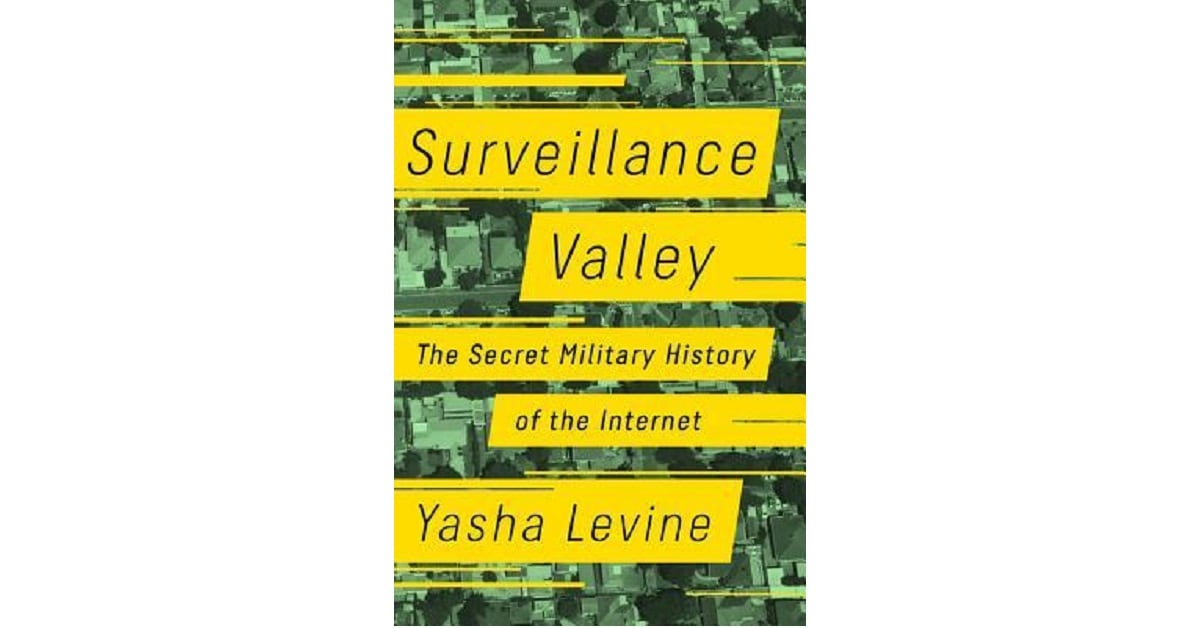
Surveillance Valley: The Secret Military History of the Internet by Yasha Levine, PublicAffairs, 384 pages, $28.
The future is hijacked, thanks to generals, Google and the government.
“The Internet was developed as a weapon and remains a weapon today,” claims this fascinating study of Potomac fervor from Vietnam to Silicon Valley. “American military interests continue to dominate all parts of the network, even those that supposedly stand in opposition.”
Purportedly privacy-conscious, conscientious corporations including Facebook, Amazon, and eBay “track and profile their users while pursuing partnerships and business relationships with major U.S. military and intelligence agencies.”
What does this mean? Uncle Sam watches you.
OK, Levine’s premise might seem like a conspiracy theory. But the internet, supposedly a “one-way ticket to global utopia,” instead transforms — “after two decades of lavish funding and research and development inside the Pentagon system” — into a consumer profit center, one that allows the U.S. “to get the drop on its enemies, both at home and abroad.”
Eighty pages of footnotes document his case.
“The biggest lesson of [Edward] Snowden’s NSA cache was that nothing happened on the Internet without passing through some kind of U.S. government bug.”
Sleep tight, and don’t let the byte bugs bite.
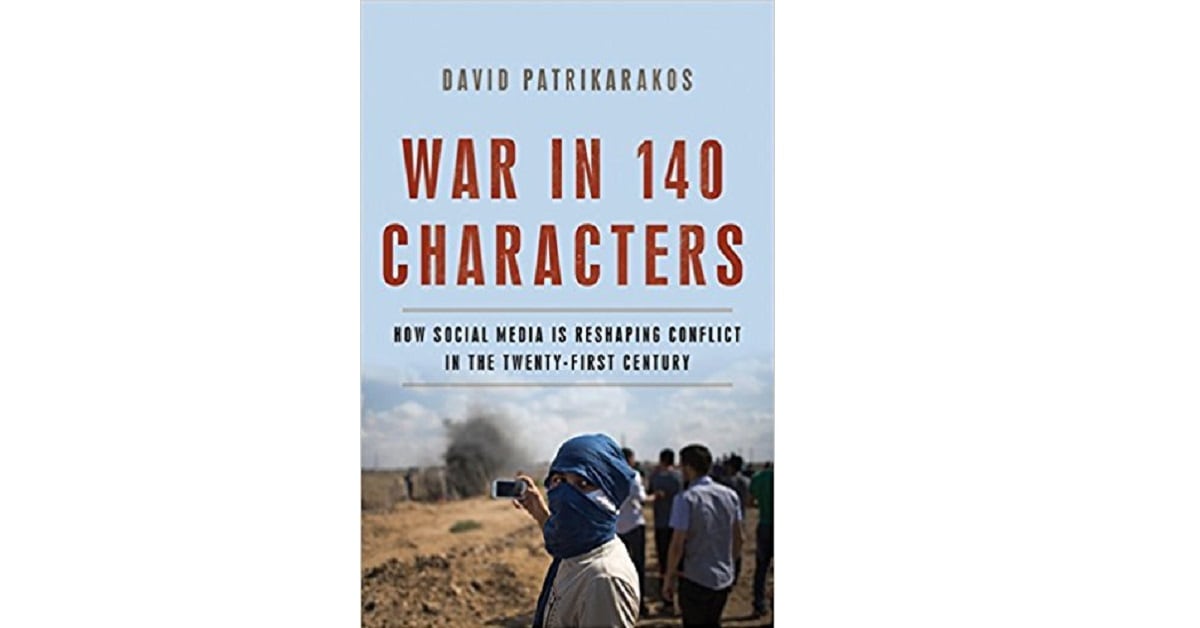
War in 140 Characters: How Social Media is Reshaping Conflict in the 21st Century by David Patrikarakos, Basic, 320 pages, $30.
The future is histrionic, and “social media has irretrievably changed the way wars are fought, reported on, and consumed.”
The journalist’s point about fighting is his least persuasive in interviews mostly with civilians in Gaza, Ukraine, Russia (one works for a troll farm) and elsewhere about the increasing reliance on digital discourse for breaking news and opinions.
But even if his “reshaping” theory is not entirely convincing you will likely agree that “homo digitalis” — anybody with a keyboard — is affecting how people, democrats and demagogues, communicate about conflict.
There’s the Islamic State’s “virtual caliphate,” whose “amplification and global dissemination” of what “the Technicolor terror group” deems success is “just as important as the victories themselves.”
Such devious digital politics can produce manipulative, mandatory messaging. Russia’s “true totalitarian” Vladimir Putin is a “master practitioner.” The election of Commander in Chief Donald Trump, “whose tweets had the ability to dominate a news cycle, could not have happened in a pre-social-media age” whose platforms “reward repetition, redundancy and … verbal conflict.”
The “information environment is sick.” In a bravado new world that gives power to the people, “facts are less important than narratives.”
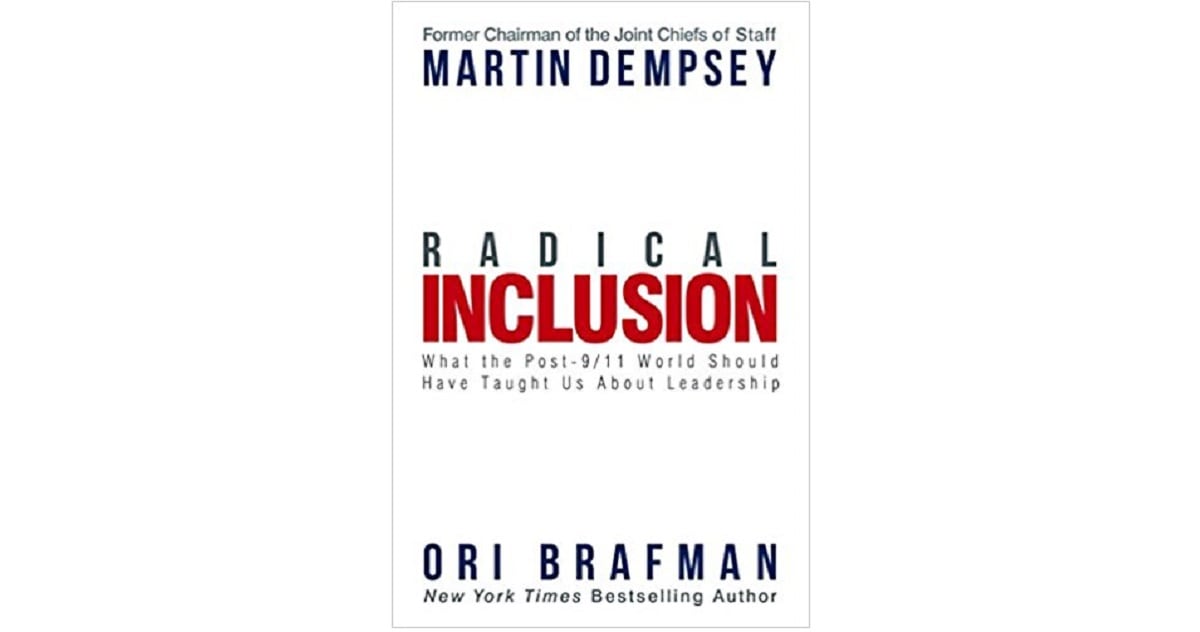
Radical Inclusion: What the Post-9/11 World Should Have Taught Us About Leadership by retired Army Gen. Martin Dempsey and Ori Brafman, Missionday, 192 pages, $27.
The future is fixable — if leaders are willing to share power.
That’s optimism from a former Joint Chiefs of Staff chairman and a vegan (gasp) Berkeley (gasp) professor who combine forces as “the general and the guru.” They tell skeptics that inclusion “should not be dismissed as just another ‘feel good’ movement.”
The message? In a digital life in which “the sense of true belonging seems to erode around us, we as leaders must create real and authentic ways for our subordinates to feel that they are a part of something meaningful.”
How? Through “participation, personalization and purpose.” By providing a sense of belonging. Showing that “contributions matter.” Using imaginations. Encouraging action. Redefining power and control. Listening, amplifying and embracing.
Some might note that Dempsey’s own Mission Command White Paper 2012 (PDF) officially concurs: “Tell your subordinates what you want accomplished, and loosen control to allow them to develop strategies to achieve the desired outcome.”
The easy-to-read, how-to advice includes examples, many from the soldier’s “45 years in uniform,” and encourages managers to respect employees, military or civilian. “By advancing the cause of the group, we advance our own narrative.”
Those who think the ideas are radical will benefit most from reading the book.
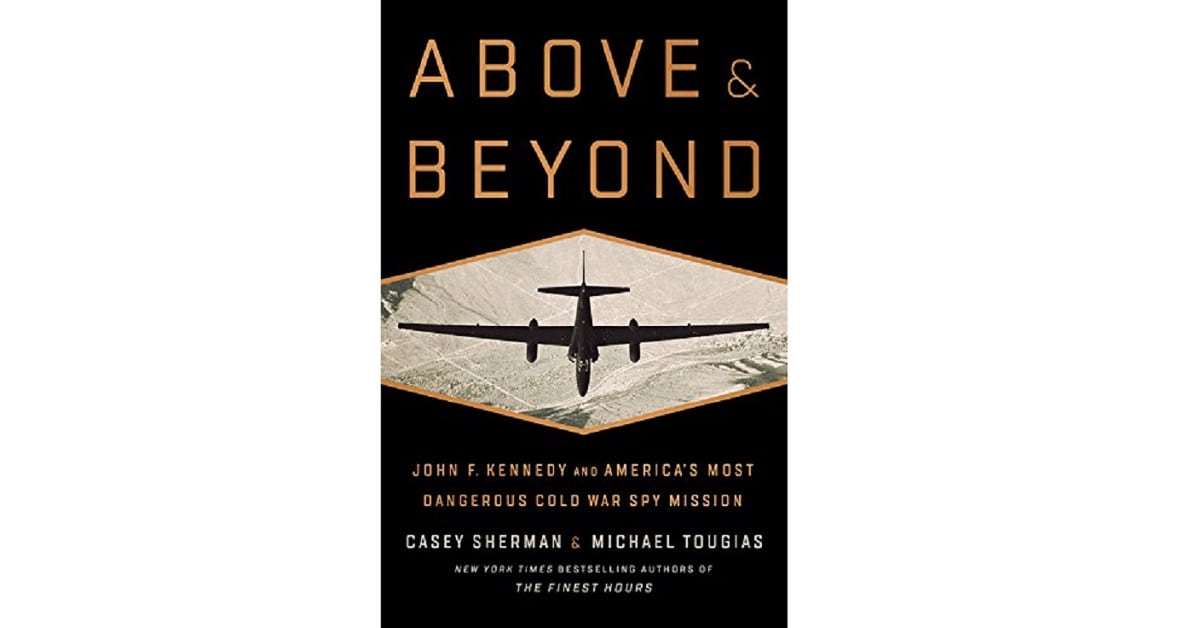
Above & Beyond: John F. Kennedy and America’s Most Dangerous Cold War Spy Mission by Casey Sherman and Michael J. Tougias, PublicAffairs, 352 pages, $28.
The pair who wrote “The Finest Hours” (made into a movie) about the Coast Guard’s rescuing of crew members of a broken tanker in a 1952 nor’easter present a you-are-there retelling of the Cold War’s scariest hours that’s due out April 17.
The book about the Cuban Missile Crisis of 1962 opens slowly, with personal stories about pilots Rudolph Anderson and Charles Maultsby and Navy Lt. John F. Kennedy. Later two of the men fly U-2 spy planes, and one becomes commander in chief. The three war heroes have big roles trying to prevent another war — with nuclear bombs on both sides — stemming from Soviet-American friction over Cuba.
Neither Kennedy or Soviet chief Nikita Khrushchev wants to push the button first. Each knows how the action will affect more than two nations. The back-and-forth conversations between them and among the National Security Council’s male-only committee — including Air Force Gen. Curtis LeMay’s “bloodthirsty blustering” — are exciting play-by-play.
The pain-bedeviled president remains calm, and “we are all lucky that someone as levelheaded as (Kennedy) occupied the White House.”

The Kiss: Intimacies from Writers edited by Brian Turner, Norton, 256 pages, $26.
Army veteran, poet and memoirist (the superb “My Life as a Foreign Country”) Turner enlists four dozen writers, and many of his lip-service members might arouse both your intellect and your imagination. To the contributors, a kiss isn’t just a kiss.
Essayists include veterans Benjamin Busch (“Dust to Dust”), Brian Castner (“The Long Walk”) and Christopher Paul Wolfe, plus airman Matthew Komatsu, military spouse Siobhan Fallon and “Sparta” novelist Roxana Robinson.
Not all the kissettes are lasting, and they cover the sublime and the sad, the respectful and the romantic, the personal and the pop cultural. The “Sexiest Kiss” for novelist Téa Obreht is between Daniel Day-Lewis and Madeline Stowe in “The Last of the Mohicans” — although “Brokeback Mountain” and “The Piano” come close.
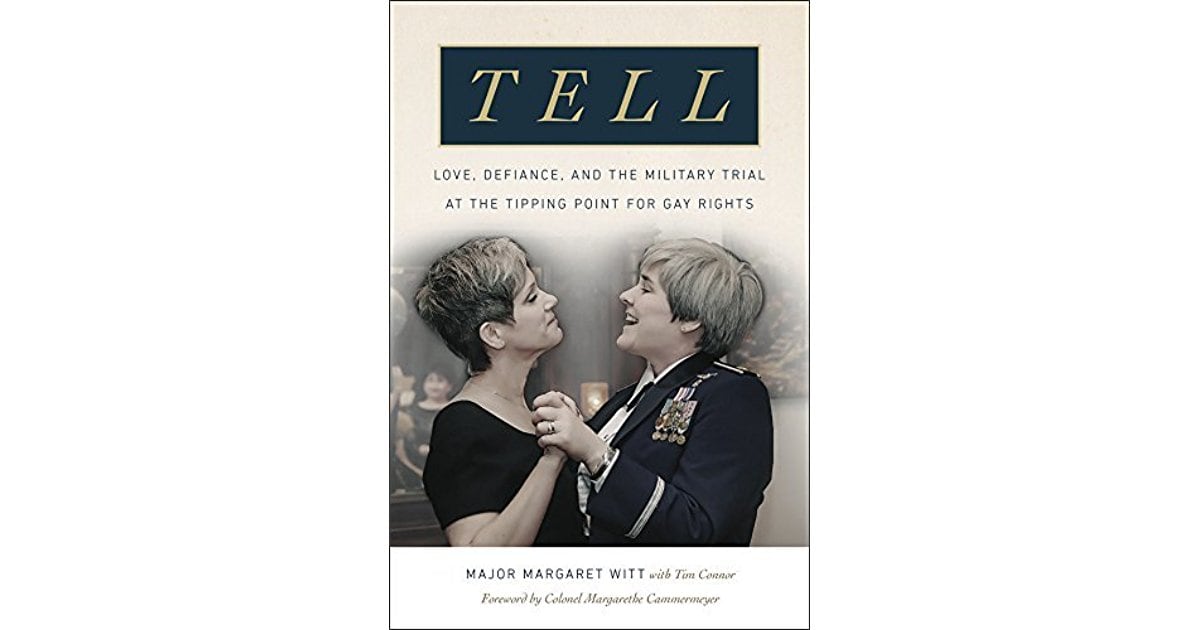
Tell: Love, Defiance, and the Military Trial at the Tipping Point for Gay Rights by Maj. Margaret Witt with Tim Connor, ForeEdge, 288 pages, $28.
The trial gets third billing in the subtitle, but Air Force flight nurse Witt and “contributor” smartly devote half the space to the tension around her court case, which was pivotal and persuasive in the repeal of the “Don’t Ask, Don’t Tell” law.
Told in third person, “Tell” is part history and part memoir, straddling duty and the dilemma of being in the closet to her colleagues and even her parents — “the intimate dimensions of it that she had to wake up to every day.” The woman whose service the Air Force features in recruiting campaigns becomes the woman the Air Forces discharges for committing “homosexual acts.”
The book also notes the testimony of the late Darren Manzella, the soldier whose coming out in Iraq helped put a face on the law that legally discriminated against gay service members from 1993 through 2011.
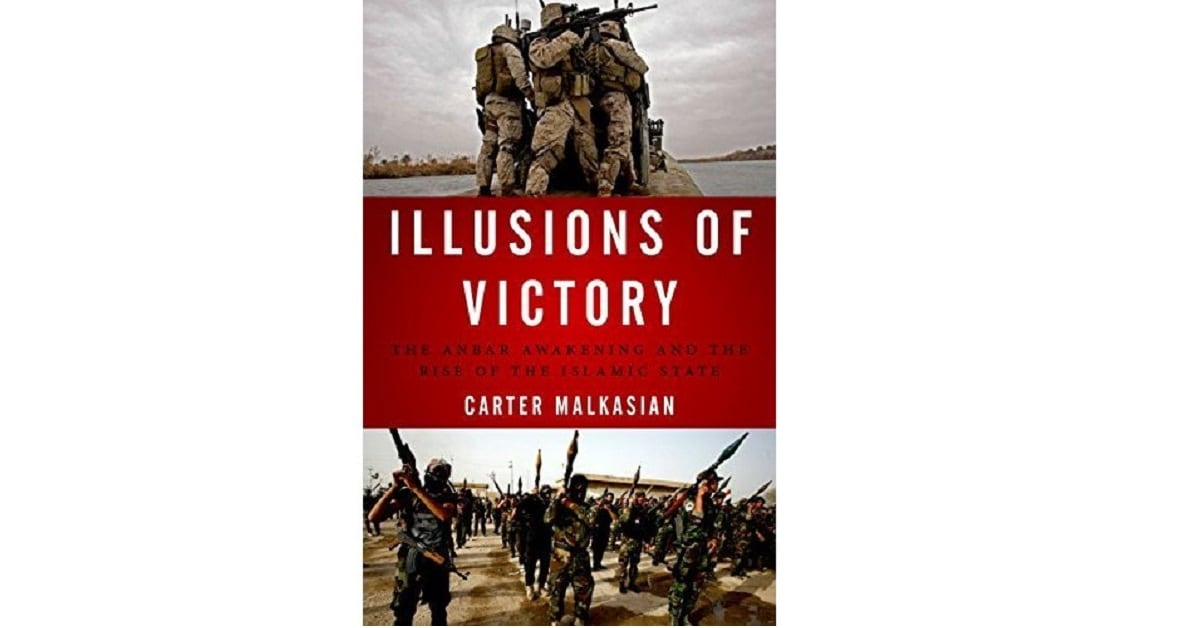
Illusions of Victory: The Anbar Awakening and the Rise of the Islamic State by Carter Malkasian, Oxford, 280 pages, $28.
In “War Comes to Garmser” (2013) the former State Department advisor to Marines in Afghanistan proves he knows the nation of tribes as well as anybody else. With this comparatively short study of Iraq — where the author served similarly in 2004-2006 — he presents a fact-filled assessment and history of how things go wrong.
What was coalition success in Anbar province evolves into an Islamic State win because of the Iraqi government’s disenfranchisement of Sunnis, tribal leaders’ inability to remain cohesive and ISIS’ “roots and appeal” to a “critical mass” of Sunnis.
Why should anybody care now? Because of “the toil and sacrifice of our Marines and soldiers,” including “model” efforts by officers Sean MacFarland, William Jurney and now-Marine Commandant Gen. Robert Neller (“the definition of gruff”) and others.
The United States’ “fleeting moment” of victory “should give an general, secretary of defense, senator, or commander-in-chief pause.”
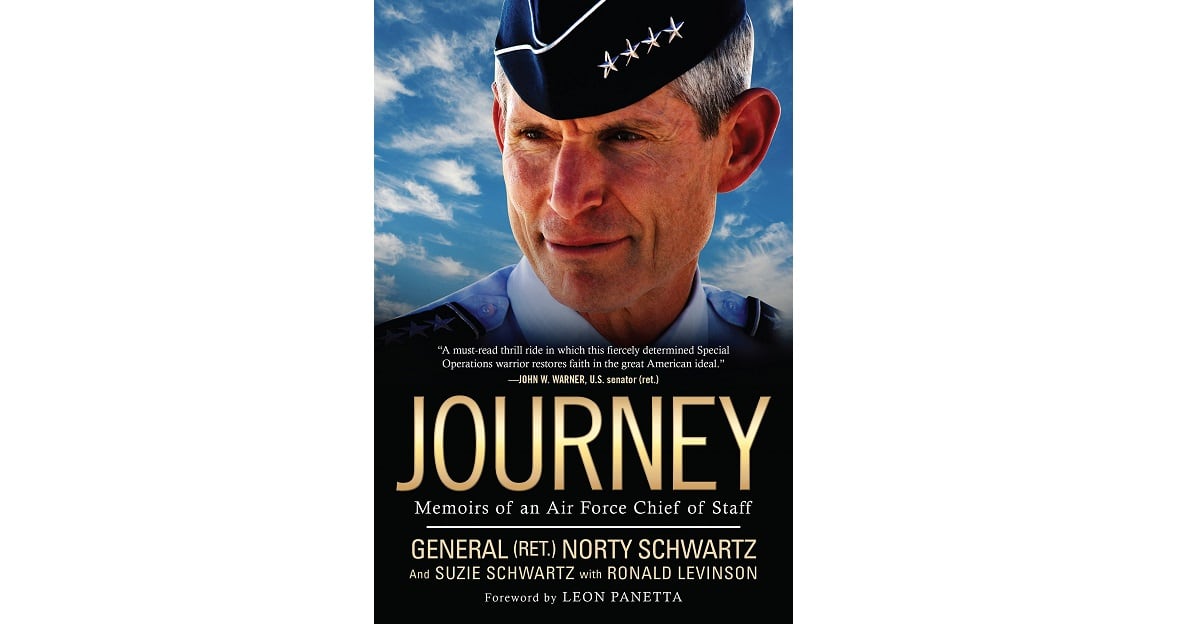
Journey: Memoirs of an Air Force Chief of Staff by retired Air Force Gen. Norty Schwartz and Suzie Schwartz with Ronald Levinson, Skyhorse, 396 pages, $28.
This is a personal history from a man who says he “is not the most engaging person,” his “account of my term” as a wartime leader — plus “original insights” and common ones about leadership.
“It’s the old adage that hard work pays big dividends,” says one, which grammatically needs no “old.” Another advises to “never let your guard down, and expect the unexpected.”
Predictably, 39 years on active duty is a lot to put into one book, but more perspective would help immensely. His instructions to Air Force “leaders at all levels” that they “must avoid the actual or apparent use of their position to promote their personal religious beliefs” is “still being debated today” — but in the book drops out of the blue in 2012. What prompts the Jewish officer’s decree? The general doesn’t say.
He covers his highs and lows. Drones permit “more proportionate application of lethal force than any other comparable weapon system.” His idea for a “distinguished warfare” medal for controllers of remotely piloted aircraft is approved then abandoned, and the 2010 Inspector General report about mistakes involving body parts at Dover Mortuary is “the low point of my entire career.”
He refers to “my two mistresses,” his military mission and his wife. Suzie has “a dedicated chapter of her own” and often energetically corrects, in italics, her husband’s recollections.
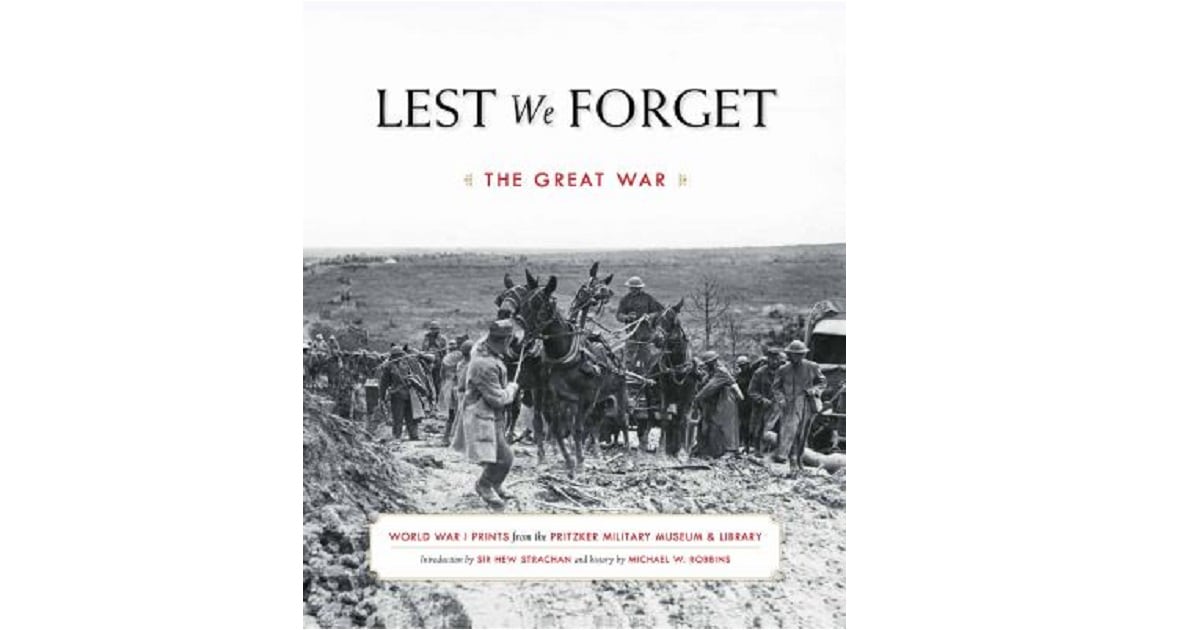
Lest We Forget: The Great War: World War I Prints from the Pritzker Military Museum & Library, Pritzker, 400 pages, $60.
Lest he be confused, your reviewer perused the pages of this coffee-table investment to determine whether the handsome volume is an art book (as the “prints” in the title denotes) or a history that happens to be illustrated with posters.
It’s hard to tell. There are 166 colorful posters and 20 full-page maps that are supplemented with black-and-white photographs including the one on the front jacket — an odd cover-art choice for a collection of vibrant images from the era when “the poster was at the apogee of its power.”
As narrative, the routine chronology rarely connects directly with art. As art, “Lest” relies on osmosis for context. Artists are identified but the works’ genesis or dimensions are not. Maps, bluntly cropped, offer vague captions without dates. Apparently you’re supposed to take the posters at face value. The publication that wants “to be America’s centennial book on World War I” unfortunately lacks the muster you expect from a museum “in partnership” with the U.S. World War I Commission. Due April 11.
“Half of net proceeds” will go to the National World War I Memorial in Washington, D.C., from the book due out April 11.
The “Lest We Forget” exhibit in Chicago runs through March 2019. It’s not the only one of its kind:
- The National World War I Museum and Memorial in Kansas City hosts “Images of the Great War” through May 13 and John Singer Sargent’s masterpiece “Gassed” through June 3.
- The Smithsonian National Air and Space Museum in Washington, D.C., hosts “Artist Soldiers,” which includes original works, through Nov. 11.
- The Library of Congress in Washington has “Echoes of the Great War” through January.
- “World War I and the Visual Arts” as well as “World War I and American Art” have closed in New York and Philadelphia, respectively, but catalogs of both exhibits are available.
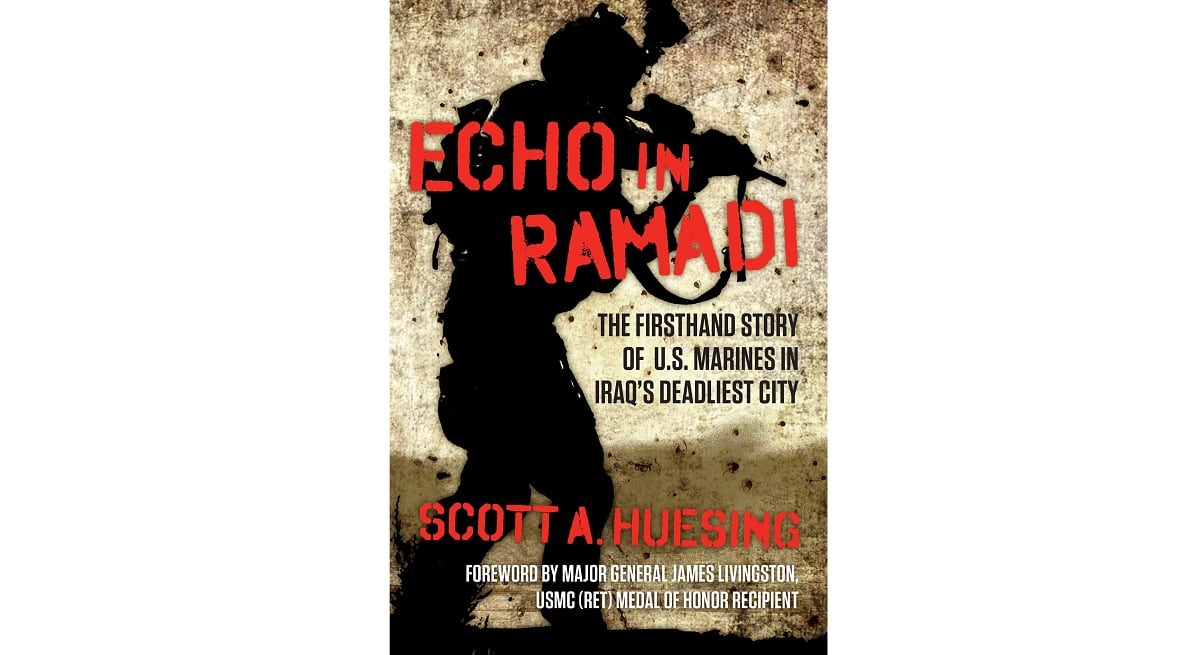
Echo in Ramadi: The Firsthand Story of U.S. Marines in Iraq’s Deadliest City by Scott A. Huesing, Regnery, 256 pages, $30.
The former major writes unabashedly about his Corps, “the most hardcore branch of warriors in the world,” and his men, whose mission is “to kill or capture the enemy” in Ramadi and Rutbah in 2006 and 2007.
“You will kill,” he tells Echo company (2nd Battalion, 4th Marines), “and when this is all over it will be my responsibility. It will be my burden to carry because I am ordering you to do it.” He almost makes you believe guilt is transferable.
But Marines are more than just “the most lethal weapons on the battlefield,” and he learns that they need a break from battle to fulfill “the need to be human if just for a short amount of time.”
His memoir — “a” firsthand take on Ramadi, not “the” — fervently describes combat friction, a favorite term, but is notably effective when he writes about connecting. After he loses his first Marine, the 36-year-old opts out of a “canned letter of condolence.” He telephones the corporal’s parents in Maine and endures “that uncontrollable terror of having to tell the truth.”
The author is executive director of Save the Brave, which receives “a portion of the proceeds.”
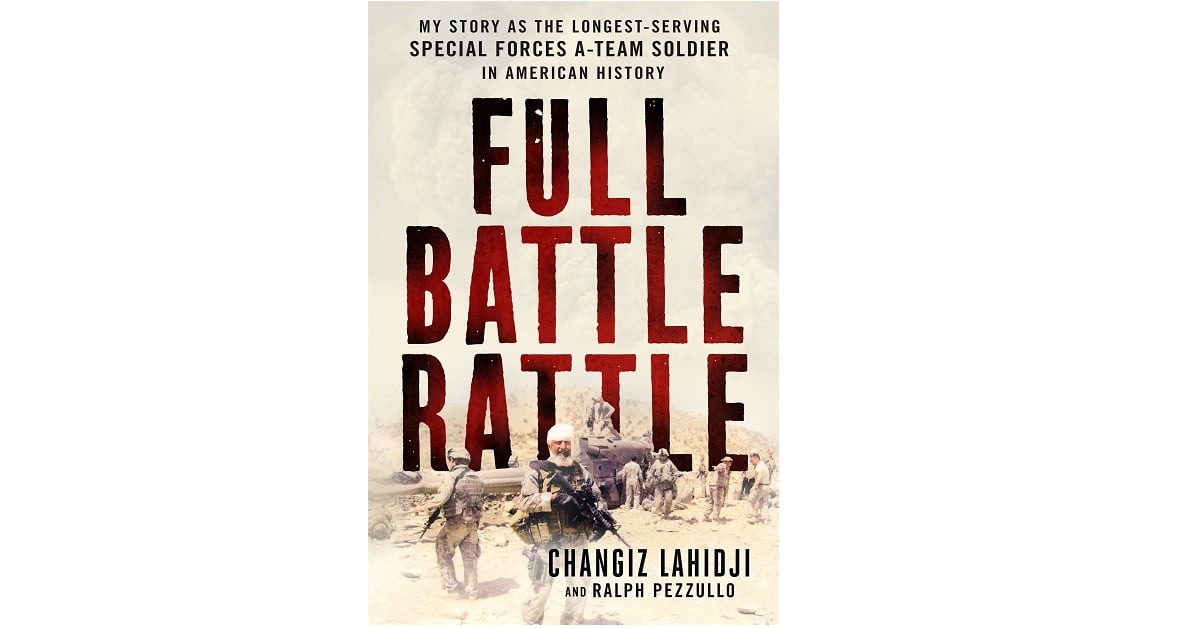
Full Battle Rattle: My Story as the Longest-Serving Special Forces A-Team Soldier in American History by Changiz Lahidji and Ralph Pezzullo, St. Martin’s, 304 pages, $27.
He leaves Iran at age 23 and becomes the first Muslim Green Beret — and probably the first to be taunted by fellow soldiers for being a “raghead.” He persists, and his perspective could be insightful to Americans, including the commander in chief, concerned about immigration:
“There are more similarities between individuals in Santa Clara, California, Islamabad, Pakistan, and Tehran, Iran, than there are differences.”
He knows geography, having served in Lebanon, Haiti, Grenada, Somalia on the “Black Hawk Down” day, Iraq and Afghanistan, where he spots Osama bin Laden in 2003. (Nobody at the Embassy in Kabul cares.) The “longest-serving” has a lot to cover, in boots and by parachute: “I love jumping from airplanes almost as much as sex.”
Despite references to partying (“a great time was had by all!”) the book is about soldiering. The memoirist and his co-author provide a timeline in narrative form that has breadth but not depth.
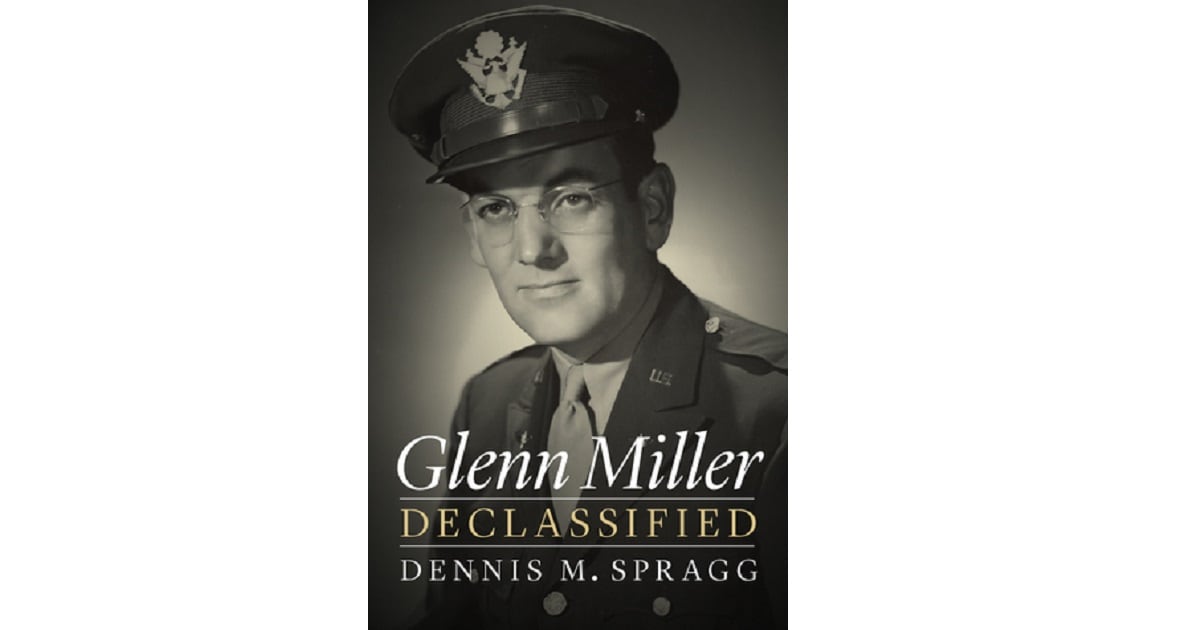
Glenn Miller: Declassified by Dennis M. Spragg, Potomac, 408 pages, $35.
The superstar trombonist and bandleader volunteers to be “with the men doing the fighting” in Europe. The Navy rejects him, but the Army Air Corps offers a commission in 1942.
In London, his orchestra fights red tape and records 528 radio broadcasts for the boys. He turns down an opportunity to head the entire Army Band because “they don’t play our kind of music” — jazz.
Sadly “on the wrong day on the wrong aircraft” in 1944 he heads to Paris, and somewhere over the English Channel a “weather-related mechanical failure caused by human error” kills him, the pilot and the senior officer.
The book respectfully puts the nuts and bolts and carburetors and military abbreviations and regulations and orchestras in order — without the emotion Miller’s music is known for.
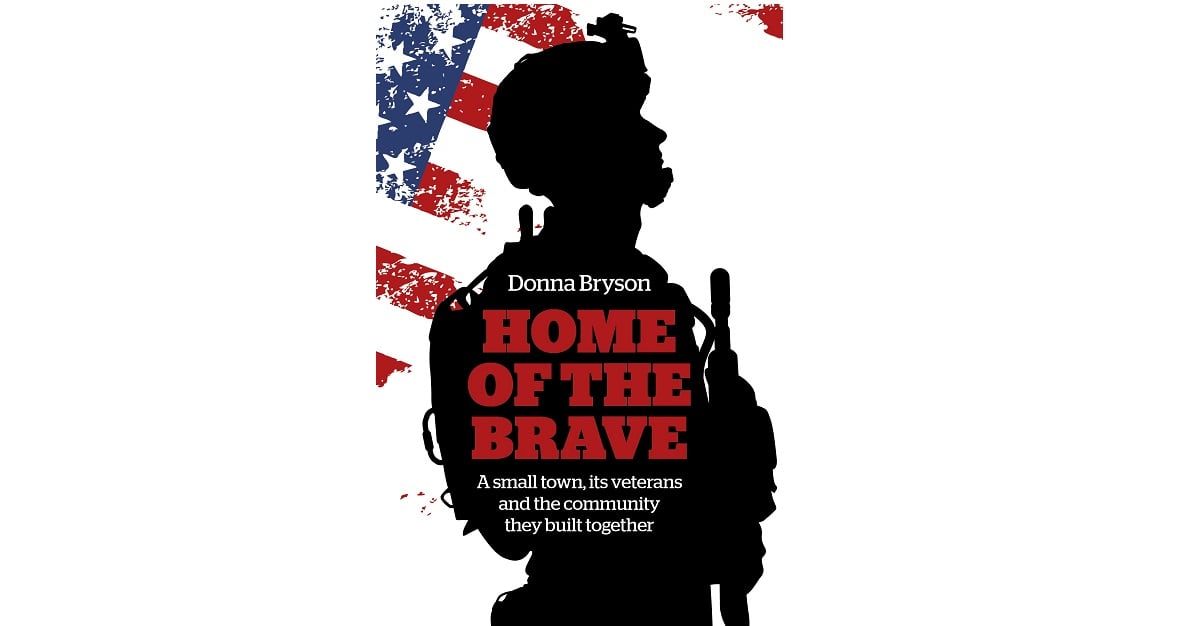
Home of the Brave: A Small Town, Its Veterans and the Community They Build Together by Donna Bryson, Chronos, 242 pages, $23.
The former Associated Press journalist interviews residents about the successes of the nonprofit Welcome Home Montrose, which tries to help veterans feel at home in a southwest Colorado town of 19,000. “Montrose had the audacity to look for solutions by taking on yet another conundrum: Can those on the sideline of an enormous conflict find a way beyond saying ‘thank you for your service’ to support America’s warriors?”
The answer? Yes.
With the feel of an expanded newspaper feature story, the book includes the voices of civilian founder Melanie Kline, other townspeople and veterans including a 93-year-old World War II Marine whose grandson, an Army medic, dies in Iraq.
“You have to get on with life,” he says.

Love and Sacrifice: A World War Brings Double Tragedy to an American Family by Dennis Whitehead, MMIMedia, 334 pages, $18.
On Aug. 13, 1944, a telegram brings news that Army Lt. Ollie “Bud” Reed Jr. was killed in action in Italy. An hour later there’s another knock at the door. His father, Army Col. Ollie Reed, was killed in France.
The well-meaning record is a military and personal survey of the Reeds of Kansas, largely through the words of mother and wife Mildred Boddy Reed, and minutely through stamp-sized family photographs.
NOTED, NOT REVIEWED
Disappointment River: Finding and Losing the Northwest Passage by Brian Castner, Doubleday, 352 pages, $29.
The Iraq veteran, author of “The Long Walk” and “All the Ways We Kill and Die” and co-editor of “The Road Ahead,” retraces, via canoe, 18th-century explorer Alexander Mackenzie’s path.
The 15:17 to Paris: The True Story of a Terrorist, a Train, and Three American Heroes by Anthony Sadler, Alek Skarlatos, Spencer Stone and Jeffrey E. Stern, PublicAffairs, 256 pages, $16.
The trade paperback edition of the 2016 book coincided with the release of the movie in which three of the four authors play themselves. It must be a weird experience.
RELATED
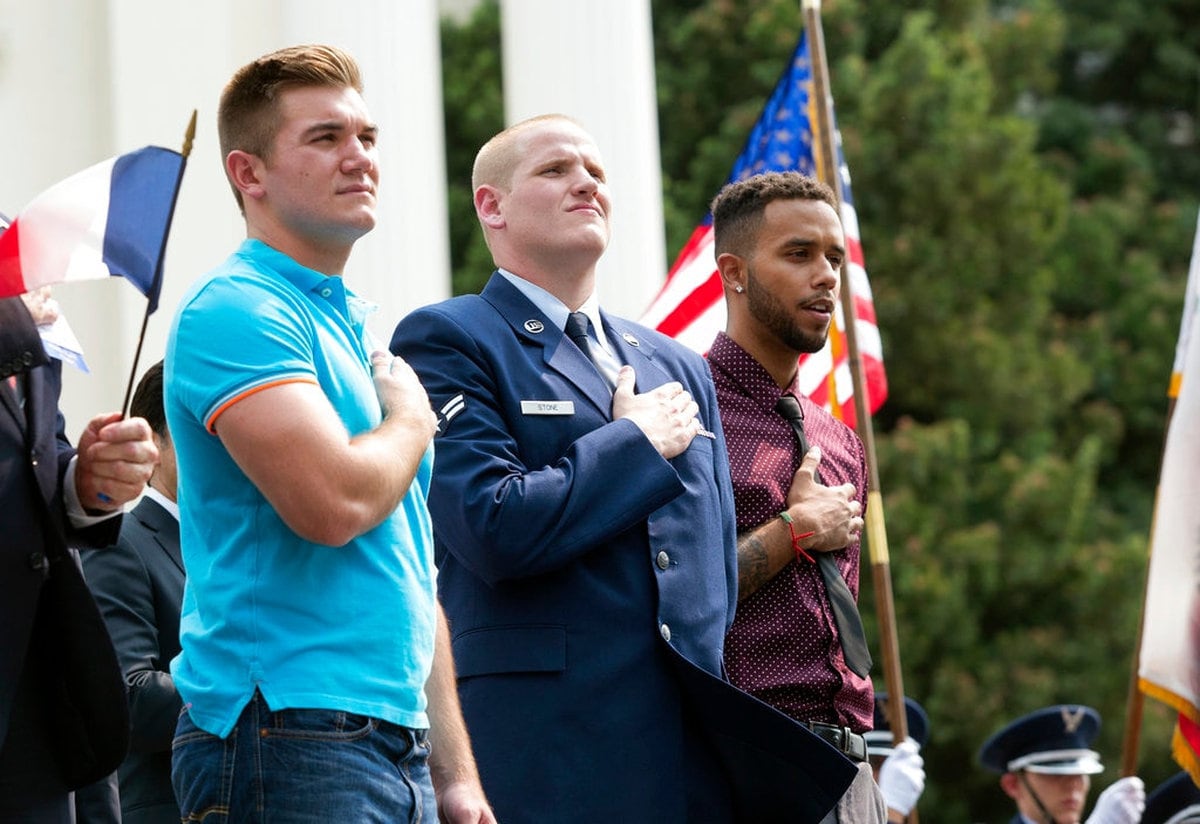
The Age of Eisenhower: America and the World in the 1950s by William L. Hitchcock, Simon & Schuster, 672 pages, $35. (Out March 20)
How the supreme allied commander and Army chief of staff handled being commander in chief, a “distinctive model of presidential leadership that Americans — now more than ever — ought to study.”
The Road Not Taken: Edward Lansdale and the American Tragedy in Vietnam by Max Boot, Norton, 768 pages, $35.
The CIA operative and former Army and Air Force officer symbolizes “the war’s many missed opportunities,” says historian Boot, a senior fellow at the Council on Foreign Relations.
The General Who Wore Six Stars: The Inside Story of John C.H. Lee by Hank H. Cox, Potomac, 280 pages, $33.
A reassessment of the officer whose “strategical genius” has been “underappreciated not only by his contemporaries but also by World War II historians.”
The 10 Biggest Civil War Blunders by Edward H. Bonekemper III, Regnery, 352 pages, $30.
The late historian’s tally is Union 6, Confederacy 4. Despite those numbers you know who comes out ahead.
What is Military History? by Stephen Morillo with Michael F. Pavkovic, Polity, 188 pages, $20.
“Military history moves slowly at times, but it does move.” The third edition adds material about gender and naval history, and the “roadmap to the field of military history is now also a sailing chart.”
Morning Star, Midnight Sun: The Early Guadalcanal-Solomons Campaign of World War II — August-October 1942 by Jeffrey R. Cox, Osprey, 448 pages, $35.
The latest from the author of the similarly titled “Rising Sun, Falling Skies: The Disastrous Java Sea Campaign of World War II.”
The Tuskegee Airmen Chronology: A Detailed Timeline of the Red Tails and Other Black Pilots of World War II by Daniel L. Haulman, NewSouth, 198 pages, $26.
Nearly day by day: Fighter pilots were flying missions in 1944 and 1945 while cadets and bomber squadrons were training not just in Alabama, but in Michigan, Kentucky and Indiana.
Behind the Lawrence Legend: The Forgotten Few Who Shaped the Arab Revolt by Philip Walker, Oxford, 420 pages, $35. (Out April 7)
A historian invites readers to remember Col. Cyril Wilson, Lt. Lionel Gray and other Brits without whom “there would have been no ‘Lawrence of Arabia.’ ”




